Abstract
Afghanistan’s vegetable production takes advantage of the diverse climatic conditions, and a wide variety of vegetables, including tomatoes, are produced. According to 2021 data, Afghanistan’s largest export item in vegetable production is tomatoes, reaching 312 thousand tonnes (kt). This export volume indicates the importance of tomatoes in Afghanistan’s agriculture, with production particularly active in the arid regions. Tomatoes account for a large proportion of domestic consumption, and although they are canned and processed, they are also widely consumed fresh. In terms of uses, tomatoes are not only eaten, but are also often processed into juice and sauce, and their versatility is driving an increase in production volume. Although Afghanistan boasts a certain amount of production of other vegetables, staple crops such as tomatoes are a key factor in determining producers’ profits. In the past, Afghanistan’s agricultural production has temporarily stagnated due to war and political instability, but in recent years, market access has improved and agricultural infrastructure has been strengthened, leading to a steady increase in exports of tomatoes and other crops. However, agriculture still requires improvements in irrigation technology and ways to deal with unfavorable weather conditions.
Production (by vegetables)
Afghanistan’s vegetable production has shown notable fluctuations between 2002 and 2021. In particular, exports in 2021 reached a record high of 312 thousand tons (kt). The export figures reflect significant growth in Afghanistan’s agriculture, with tomatoes and potatoes being key export products. In the early 2000s, Afghanistan’s agriculture was suffering from a decline in production due to war, political instability, and natural disasters. However, in recent years, improvements in agricultural infrastructure, strengthened irrigation systems, and advances in agricultural technology have paid off, increasing productivity. Tomato production in particular has grown rapidly in response to increasing demand in the consumer market, and plays an important role in both domestic consumption and export. Additionally, as agriculture stabilised, Afghanistan has strengthened its vegetable exports to neighbouring countries, improving its access to markets. Exports peaked in the late 2000s through 2021 and have remained at relatively stable levels since then. However, sustainable agricultural development still faces challenges such as climate change and a lack of infrastructure.
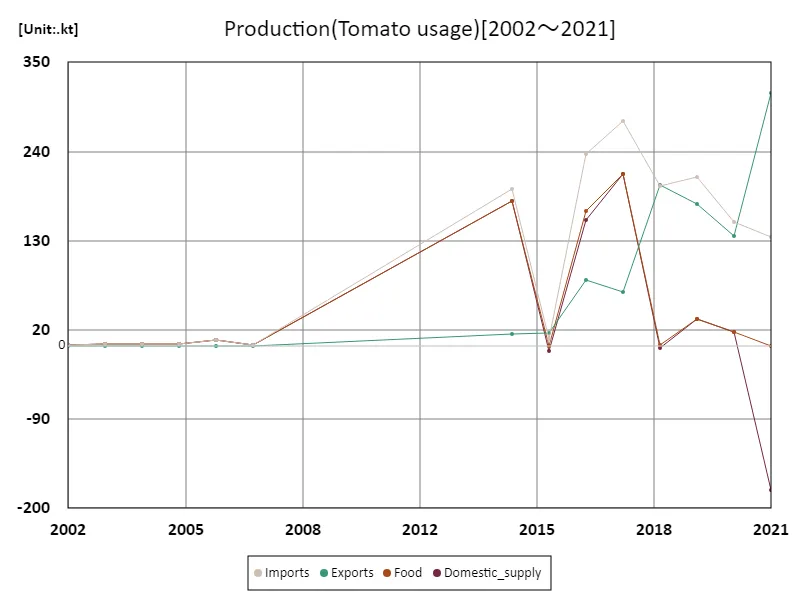

The maximum is the latest one, 312kt of Exports
By vegetable
Afghanistan’s vegetable production has shown notable fluctuations between 2002 and 2021. In particular, exports in 2021 hit a record high of 312 thousand tonnes (kt), with overall export volume reaching 100% of its peak. This enabled Afghanistan to establish itself as a major vegetable exporting nation, with tomatoes, potatoes and onions being the main export items. In the early 2000s, the productivity of agriculture in Afghanistan declined due to war, political instability, and a lack of infrastructure. However, in the 2010s, agricultural infrastructure and technology improved, leading to an increase in production, especially of tomatoes and potatoes. Improvements in irrigation techniques and agricultural technical assistance have increased production efficiency and contributed to an increase in export volumes. In addition, Afghanistan’s vegetable exports are expanding, primarily to neighboring countries and the Middle East, which has led to increased income for farmers. However, agriculture still faces challenges such as climate change and water shortages, and further support is needed for sustainable development. Nevertheless, the increase in export volumes demonstrates the resilience and growth of Afghan agriculture and offers hope for future developments.
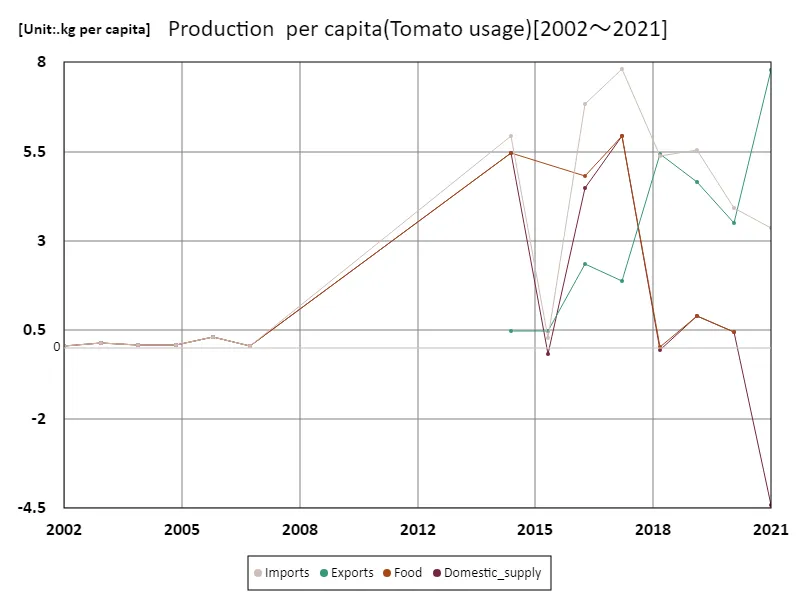

The maximum is 7.8kg per capita[2017] of Imports, and the current value is about 43.2%
By vegetable
The 2021 data will be an important indicator for vegetable production in Afghanistan. Exports for the year totaled 312 thousand tonnes (kt), well above the historical average of 90 kt. The total production volume was 270kt, with export-oriented production accounting for a significant proportion of the total. This demonstrates that Afghanistan’s agriculture sector is playing a key role in economic growth. The main vegetable production items in Afghanistan are tomatoes, potatoes, and onions, with tomatoes in particular being in high demand not only for domestic consumption but also in the export market. These crops are produced mainly in dry regions, and highly adaptable varieties are cultivated. In recent years, improvements in irrigation technology and agricultural technical assistance have led to increased productivity and export volumes. Meanwhile, agricultural production continues to face challenges such as climate change and water resource shortages, and maintaining a stable supply requires further infrastructure development and the introduction of sustainable agricultural techniques. Nevertheless, the increase in export volumes in 2021 is a positive sign of Afghan agriculture’s resilience and competitiveness in international markets, raising hopes for future developments.
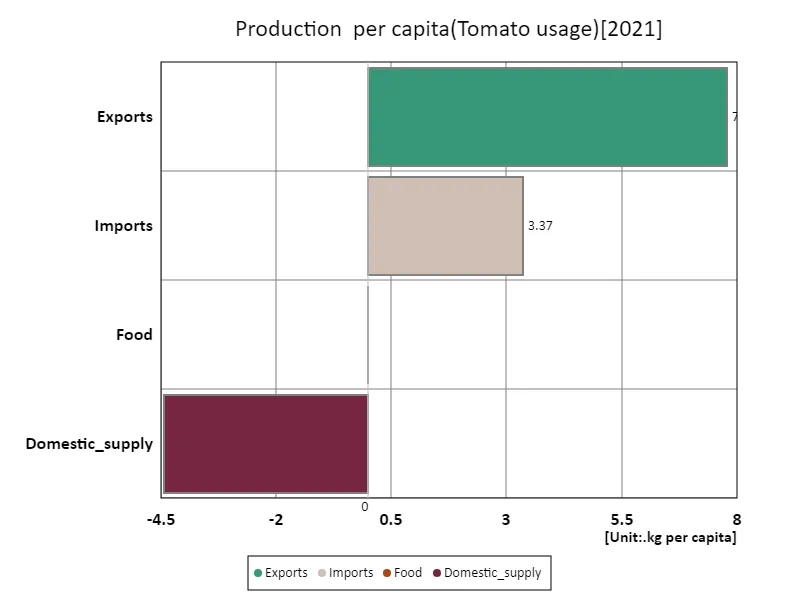

The maximum is 7.78kg per capita of Exports, the average is 2.24kg per capita, and the total is 6.73kg per capita
Tomato usage
Afghanistan’s tomato production has experienced significant growth since 2002, especially for export. According to the latest data, exports reached a record high of 312 thousand tonnes (kt) in 2021, making it an important player in Afghanistan’s agriculture. This growth is due to domestic consumption as well as increased demand for processing and export. Tomatoes are Afghanistan’s main agricultural product, and in addition to being consumed fresh, they are also widely used in processed products such as juice and tomato sauce. Demand for processing in particular has increased, which has led to an expansion of production. In the export market, the Middle East and neighboring countries are the main targets, and Afghan tomatoes have earned a certain reputation for their high quality. Tomato production is mainly carried out in dry regions or areas where irrigation is possible, and improvements in agricultural techniques and water management support productivity. However, climate change and water resource constraints remain challenges, and further technological innovation and infrastructure development are necessary for sustainable production. However, the increase in export volumes indicates that Afghan agriculture is becoming more competitive in the international market, and further development is expected.
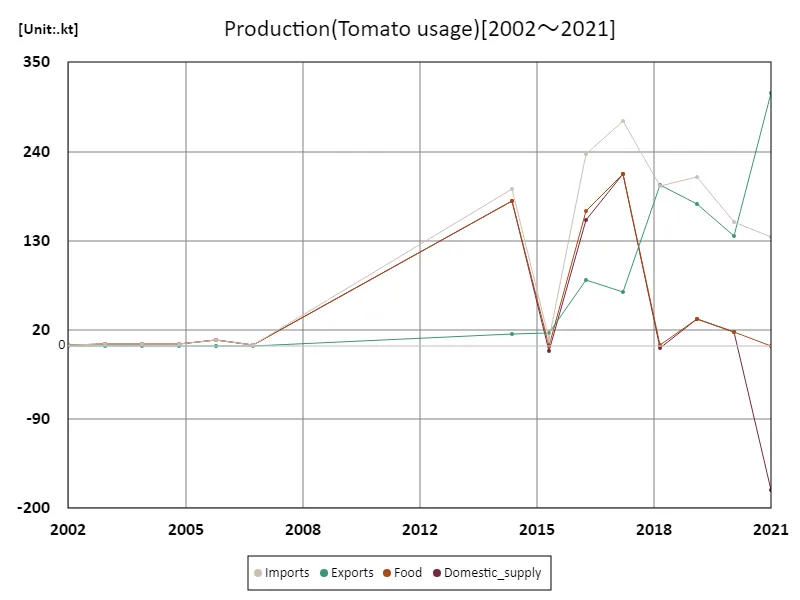

The maximum is the latest one, 312kt of Exports
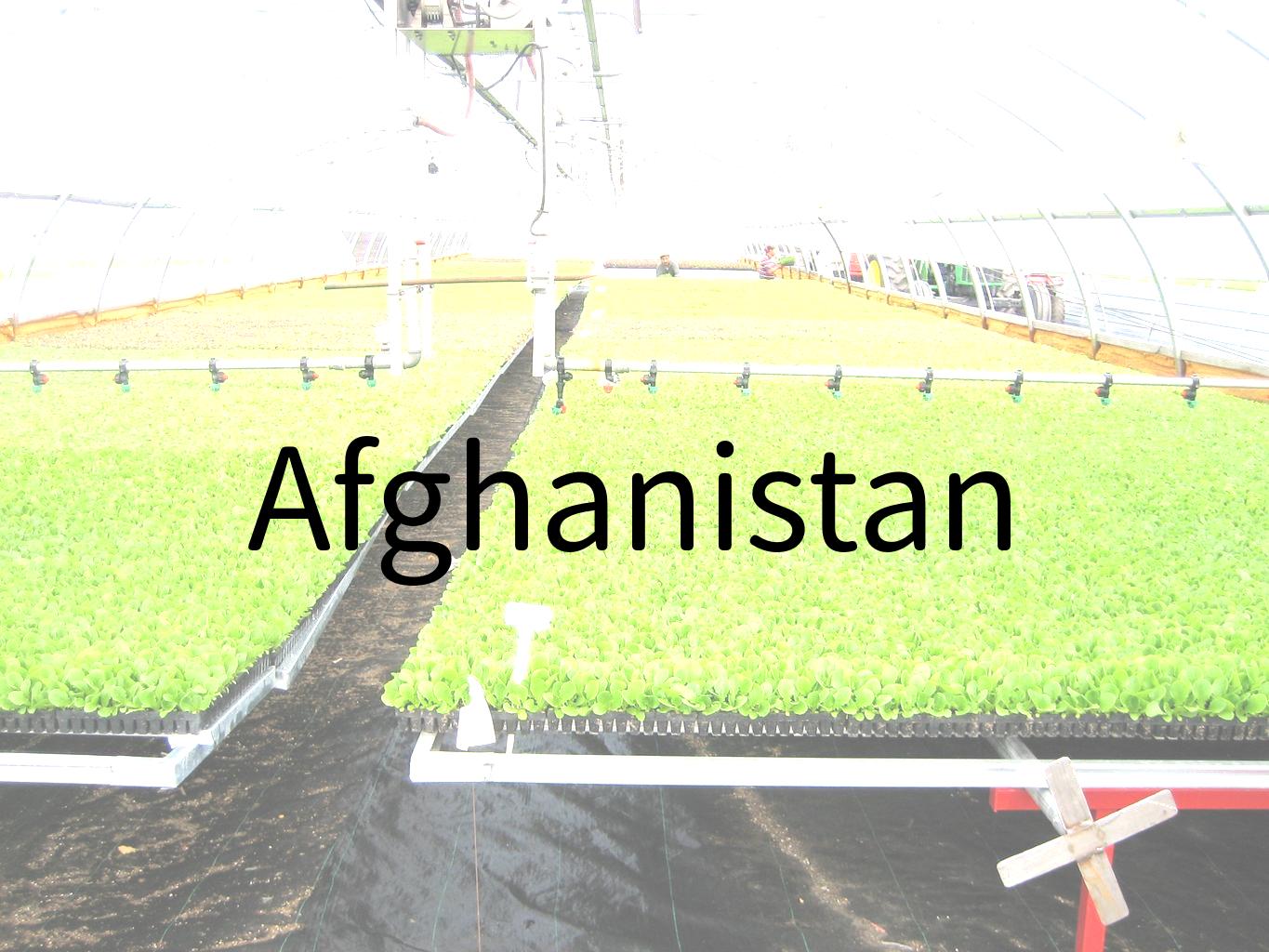


Comments